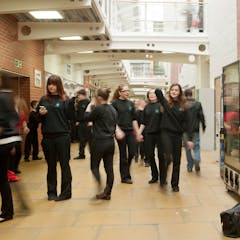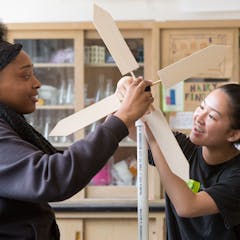
Articles on PISA
Displaying 1 - 20 of 106 articles

There are alternatives to England’s focus on synthetic phonics, which teaches children to decode words by learning the relationship between letters and sounds.

Pisa measures 15-year-olds in reading, maths and science every three years - but is that the best way to test an education system?

Two researchers independently studied Australian students’ results. These papers both reached the same conclusions: scores on the vast majority of standardised assessments are not in decline.

To boost post-pandemic math learning, a multi-dimensional approach is needed that promotes the success of the whole child: academic, physical and socio-emotional.

The latest Programme for International Student Assessment (PISA) show Australian 15-year-olds have recorded similar results to 2015 and 2018 in maths, science and reading.

New research looked at NSW Year 12 results in English and maths and tested if socioeconomic status or rural location impacts student results.

Let’s not burden 15-year-old students with a low-value test that does a poor job of evaluating learning.

Motivation plays a large part in educational success. Of students who sat the PISA test in 2018, 73% indicated they would have put in more effort had the scores counted towards their school marks.

Australian governments have committed a lot of money and effort over the last few decades to improve schooling using “what works”. But this hasn’t worked. So what can we do to improve education?

Only 8% of Australian students said they were learning two or more foreign languages in 2018, compared to 50% of students across OECD countries.

Studies on homework are frequently quite general, and don’t consider specific types of homework tasks. So it isn’t easy to measure how effective homework can be. But here’s what we do know.

A survey of 268 teachers found 85% considered education news coverage to be generally negative. And 81% found it demoralising.

Canada’s Council of Ministers of Education has yet to articulate a vision for overcoming two school years of disrupted education.

An analysis of data from the Programme for International Student Assessment (PISA) has found the gender gap in maths tests increased where papers contained more multiple choice questions.

Improving initial teacher education is a long-term strategy. It won’t achieve the education minister’s goal of getting Australia to the top-performing nations in maths and literacy by 2030.

The NSW curriculum review recommends students be assigned tasks based on their ability, rather than their age. This approach recognises the progress individuals make over the course of a year.

Our children should no longer be taught formulaic writing. Writing education should encompass skills that go beyond the capacities of artificial intelligence.

Standardised tests or exams have been in place in a number of educational systems for nearly two centuries. They are rooted in reformers’ desire to regulate schooling and hold educators accountable.

Data are about to be released on how well countries teach Year 4 and 8 maths and science Results from the last cycle of testing in 2015 showed Australia’s students achievement had flatlined.

Teachers could better support young people’s scientific inquiry into urgent planetary and social issues if school testing valued practical science.
